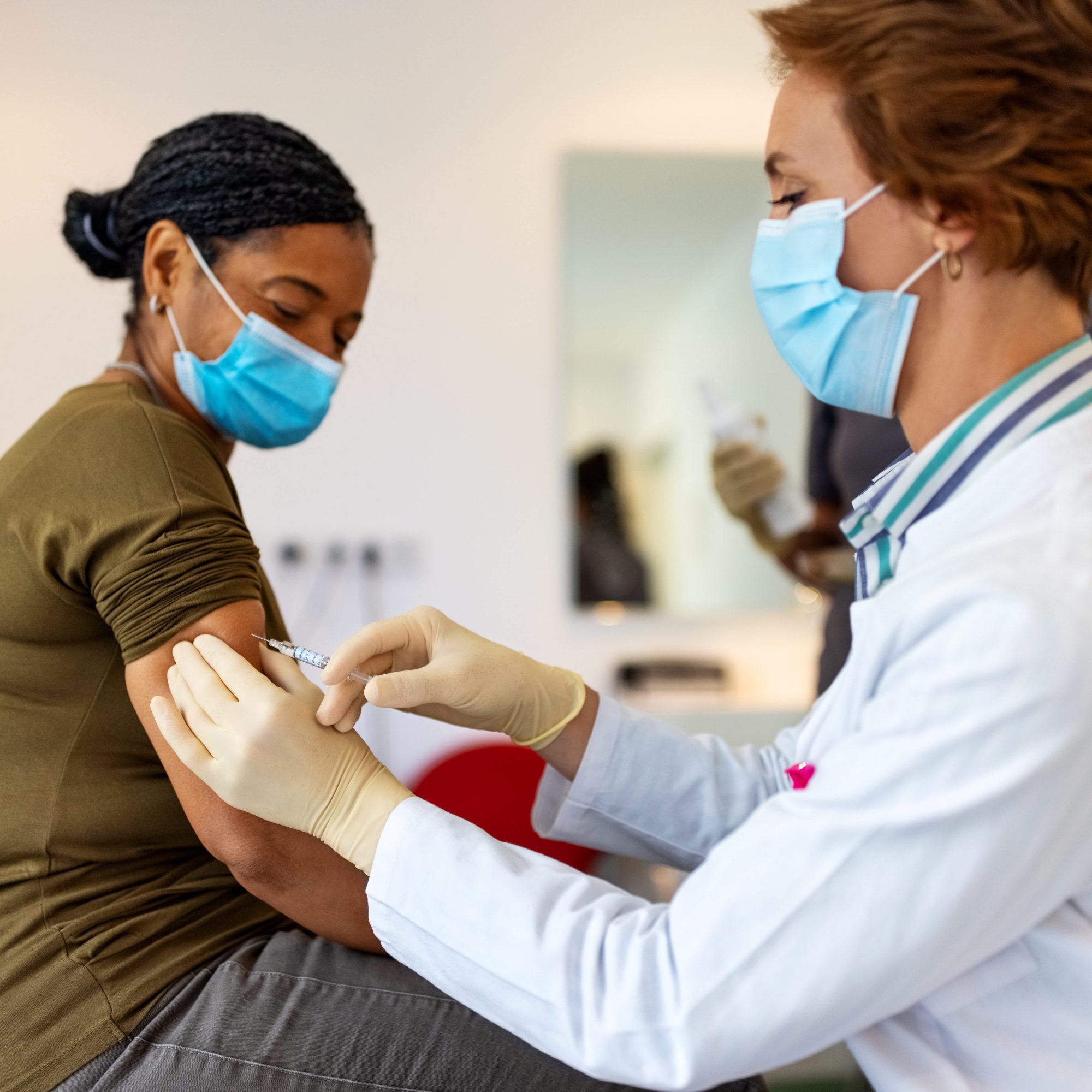
- POPSUGAR Australia
- Fitness
- Here's Everything We Know About the Side Effects of the COVID-19 Vaccines So Far
Here's Everything We Know About the Side Effects of the COVID-19 Vaccines So Far

COVID-19 vaccines from Pfizer and Moderna are already being distributed, which means vaccine side effects are a topic on everyone’s minds. As data continues to emerge, here’s a look at what the numbers and experts are saying about the three vaccine candidates that are furthest along.
Side Effects Are More Common After the Second Dose
You can expect stronger side effects (listed below) after the second dose of the Pfizer/BioNTech and Moderna vaccines, the FDA reports. Some vaccine recipients have already confirmed that this is the case. “When people receive that second dose, they are receiving the second booster to try and reach the maximum efficacy,” said Edward Cachay, MD, an infectious-disease specialist at UCSD, in an interview with NBC. “So by boosting the immune system, in general people develop joint pains and low-grade fevers that usually last 24 to 48 hours.” The FDA confirmed that “there may be some side effects after either dose, but even more so after the second dose.”
Remember that despite the increased likelihood of side effects, it is critically important to receive the second dose of the vaccine for full protection. The Pfizer vaccine is 52.4 percent effective after the first dose, compared to 95 percent effective after two doses. After the second dose of the Moderna vaccine, efficacy jumps from 80 to 90 percent up to 94.5 percent.
What Are the Side Effects of the Pfizer Vaccine?
The vaccine developed by Pfizer and BioNTech, determined to be 95-percent effective at preventing COVID-19, has reported several common side effects. According to the FDA, minor side effects include:
- Injection site reactions, reported by 84 percent of trial participants
- Fatigue, reported by 63 percent of trial participants
- Headaches, reported by 55 percent of trial participants
- Chills, reported by 32 percent of trial participants
- Joint pain, reported by 24 percent of trial participants
- Fever, reported by 14 percent of trial participants
More serious side effects were rare, occurring in less than 0.5 percent of patients, and were less frequent in participants over 55 years old. As we talked about before, side effects were also more likely to occur after the second dose of the vaccine.
Bell’s palsy, a temporary facial muscle paralysis, occurred in four patients who received the vaccine compared to none who took the placebo, three of which were unresolved by the time the vaccine was submitted to the FDA in November. “The four cases in the vaccine group do not represent a frequency above that expected in the general population,” the FDA noted. Some participants also reported swelling of the lymph nodes.
Overall, the FDA said the vaccine’s clinical data “met the prescribed success criteria,” according to the Wall Street Journal. The fact that side effects often occurred soon after patients got the vaccine indicates that it’s triggering a strong immune response, said Angela Rasmussen, PhD, a virologist and affiliate at the Center For Global Health Science and Security at Georgetown University, in the Wall Street Journal article.
Pfizer Vaccine Allergic Reaction Reports: What We Know
Severe allergic reactions were not a significant issue in the clinical trials, as Pfizer explained that its trials didn’t include people with a “history of severe adverse reaction associated with a vaccine and/or severe allergic reaction (e.g., anaphylaxis) to any component of the study intervention(s).” But when the Pfizer/BioNTech’s COVID-19 vaccine was administered in the UK on Dec. 8, two members of Britain’s National Health Service experienced allergic reactions to the shot – both have a history of severe allergies. Thankfully, they are both recovering well. As of now, the UK’s Medicines and Healthcare products Regulatory Agency advised that people with a history of “significant” allergies to vaccinations, medications, or food should not receive the Pfizer BioNtech vaccine.
Related: Dr. Fauci Says Joe Biden’s 100-Day Mask Mandate to Reduce COVID-19 Cases Is “a Good Idea”
What Are the Side Effects of the Moderna Vaccine?
Moderna’s COVID-19 vaccine is 94.5 percent effective and, according to the company, led to mostly mild or moderate side effects. These included:
- Injection site pain or redness
- Fatigue
- Muscle pain
- Joint or muscle pain
- Headache
The Moderna vaccine is waiting on FDA analysis, but the company said that preliminary analysis “suggests a broadly consistent safety and efficacy profile across all evaluated subgroups.”
Moderna COVID-19 Vaccine Allergic Reaction Reported
On Dec. 24, a Boston doctor reported a severe allergic reaction after receiving the Moderna coronavirus vaccine, according to The New York Times. It is the first case of an allergic reaction linked to the Moderna vaccine. The doctor, Hossein Sadrzadeh, MD, a geriatric oncologist at Boston Medical Center, has a severe shellfish allergy, and said he felt dizzy and had an increased heart rate immediately after receiving the vaccine.
According to a statement from David Kibbe, a spokesman for Boston Medical Center, Dr. Sadrzadeh self-administered his personal EpiPen after he started to develop an allergic reaction. He was taken to the Boston Medical Center Emergency Department, evaluated, treated, and discharged.
Related: I Lost My Sense of Smell to COVID-19, and More Than a Month Later, I’m Still Recovering
What Are the Side Effects of the AstraZeneca Vaccine?
AstraZeneca halted its clinical vaccine trials in September, after two participants suffered serious neurological reactions. The trials have since resumed, though questions remain as to the dosing inconsistencies and mistakes seen across trial groups. Full data on other side effects has not yet been released.
POPSUGAR aims to give you the most accurate and up-to-date information about the coronavirus, but details and recommendations about this pandemic may have changed since publication. For the latest information on COVID-19, please check out resources from the WHO, CDC, and local public health departments.


